
Rope Knots Every Hunter Needs to Know
If you can tie your boot laces, you can easily tie all the rope knots you need to know to get you through hunting season. With a few basics and a little practice you will be tying these easy knots, and most importantly you will be able to untie them too!
In the proper hands a rope knot will be your friend. Tied improperly and the knot may fail or break and possibly become jammed so tight it becomes impossible to unknot, leaving you with one alternative... cut the rope.
I have always been kind of fascinated with rope knots and so I have learned to tie many varieties to use in various situations. At moose camp for instance we put up tarps, tie gear down, tow firewood, hoist and pull moose out of the woods and on the rare occasion tow vehicles or ATV’s. In all of these cases we tie knots, some of which need to be strong; that is, not to weaken the rope. I do not know about you but I do not like cutting the rope, so I tie all my knots in such a manner that they can be easily undone. Rope can be expensive, so wasting it by cutting is just that... a waste!
It never ceases to amaze me all the rope and pieces of rope that are left behind by others. Just go to any campsite and look around, you always see a piece of rope or string wrapped around a tree or limb, with its bitter end left dangling. More often than not the reason the rope has been cut is because the rope knot was done improperly and therefore was impossible to untie.
I own a small bin that is stuffed full of short pieces of rope, a lot of which are pieces that I have scrounged or I have found. There are of course, times when cutting the rope is not an option, but I keep all those shorter pieces to be put to use at a later time.
Easy To Tie Rope Knots
- Half Hitch
- Reef Knot
- Clove Hitch
- Figure of Eight
- Truckers Knot
- Bowline (my favorite)
Half Hitch
The half hitch or the overhand knot is the simplest of all and is the foundation for several other knots such as the reef knot and granny knot.

When I was a few years younger, my uncle was the first one to take me out moose hunting, he was quite fond of his little mantra whenever we were using a rope for something, he would say... “Don’t Cut the Rope”. Now whenever I am tying rope knots I can hear his voice in my head as constant reminder, it has just kind of stuck with me.
Reef Knot
The reef knot is used to tie two similarly sized ropes together. It is best served as a parcel knot or to tie a triangular bandage in first aid. If put under too much strain though it will jam and be difficult to untie. To make the reef knot a very simple way to remember is "right over left, then left over right".

The reef knot.

The granny knot – should be avoided because it will slip and or jam.
I use a variation of the reef knot to tie off a moose quarter to a spar; it consists of the "right over left, then left over right" but I will make three or four turns instead. Because the rope is against a log it will seldom pull up snug and remains easy to untie.
Clove Hitch

Another easy rope knot to tie is the clove hitch, basically it is two half hitches that oppose each other. It is not considered to be a superior knot for strength and can slip or come completely undone. It does however have many practical uses, such as securing a tarp, tying a horse or holding a bedroll. You can make a clove hitch become more secure by tying a half hitch around the standing part.
Figure of Eight
The figure of eight by itself is only a stopper knot,
but by doing some addition line work it becomes a very useful rope knot.
When the figure of eight knot is put to use it is meant to prevent the
bitter end from feeding through a pulley.
The figure eight loop or
rewoven figure eight loop is a very practical knot for securing an
object to the end of a line. There are two shortcomings with this knot:
one, it is not quick to untie and two, because of its use in climbing
can lead to serious injury if not re-threaded correctly.
 Figure of Eight Knot |
 Figure of Eight Loop Knot tied around an object |
 Figure of Eight Loop Knot |
Figure of Eight Loop Knot is tied by first tying a figure eight well back on the line then looping the free end around or through the object to secure. You then carefully follow the figure eight knot in reverse order to complete the knot.
Figure of Eight Loop Knot
Truckers Knot
The truckers knot is just that, used by truckers to secure loads. The great thing about this rope knot is it can be tied very speedily and the knot tension can be adjusted very quickly. I use this knot almost exclusively when securing an overhead tarp.
 After securing one end to the part you need to secure the next step is to create a slip knot in the rope. |
 With the free end of the rope feed through or around a stationary object to apply tension then bring back through the slip loop. Then apply tension as you deem necessary. |
 Pinch the rope where it comes through the loop and secure. In this example I used a quick release knot. |
Bowline Knot
The bowline is my favorite rope knot of all. This is because it has so many uses, it is relatively easy to tie and it will, under most circumstances be easy to untie.
 Bowline step one. |
 Bowline step two. |
 Bowline step three. |

Bowline tied in the center (on the bight) of a length of rope. It's perfect for dropping over your trailer hitch!
Don't Cut the Rope!
We use this rope knot (bowline) whenever there is going to be substantial load, as an example when we need to pull a moose for any distance, it is always a bowline that I will tie. We carry close to 1000 meters of rope (3300 feet) with us to moose camp, and we have found out the hard way that the weakest link in any rope is the knot. We have also found that if you do not tie the right knot you just may have to use your knife on the rope! Heaven Forbid! Especially if the knot happens to be mid span on a rope!
Pulling a moose from 700 or
more meters away through a forest is no easy task. You must co-ordinate
your efforts. We use two way radios and carry a selection of pulleys to
help along the way. Because we use four wheeled drive trucks we often
put a large amount of strain on our knot, therefore it is imperative
that the rope knots are easy to untie.
If we are trying to pull our moose in one piece (our preferred method) we frequently are only able to pull a moose 40 to 50 meters at a time, consequently causing us to retie our rope knots many times before we get the moose out of the forest and out to the vehicles.
If you don't like to use knots then have a look at the Runlock Rope products we use. The braided rope uses a "lock" to secure it and will never jam.
Disclaimer: We have tried to convey good rope management practices, but we in no way assume liability by the use of the described knots. Use these knots with discretion and use them safely. You must understand the WLL (working load limit) of any rope product you use.
Want to learn how to hunt moose? Or are you wanting to increase your moose hunting skills?
Look no further!
Our moose hunting tips book is written with
not just the novice in mind, there are tips in the book that even the
most seasoned moose hunter will find of value.
The book includes 57 chapters, with more than 150 pages of information, jam packed with tips, techniques and discussions - The Ultimate Guide to Moose Hunting!
And don't forget to order one of our Fiberglass Moose Calls. In stock and ready to ship.
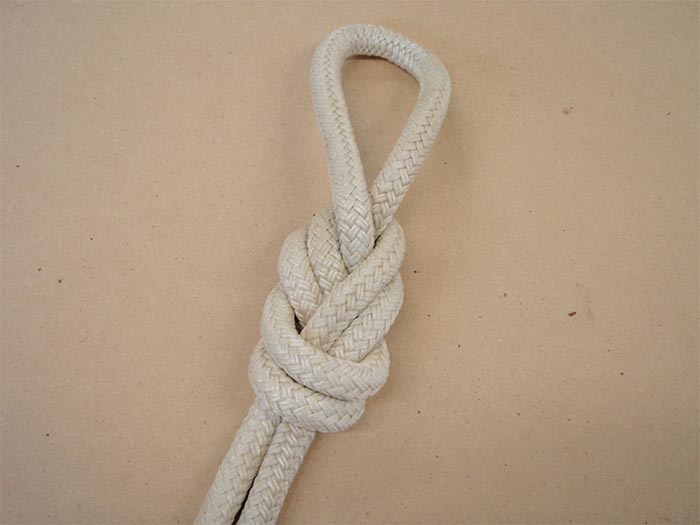
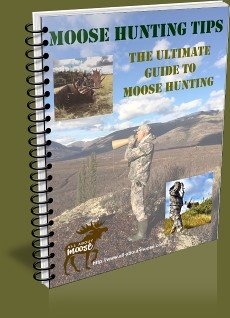
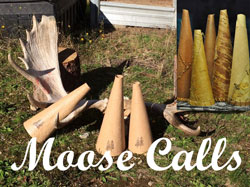
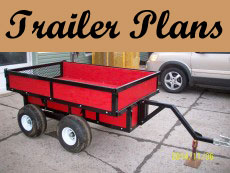
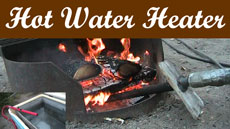



Comments
Have your say about what you just read! Leave me a comment in the box below.